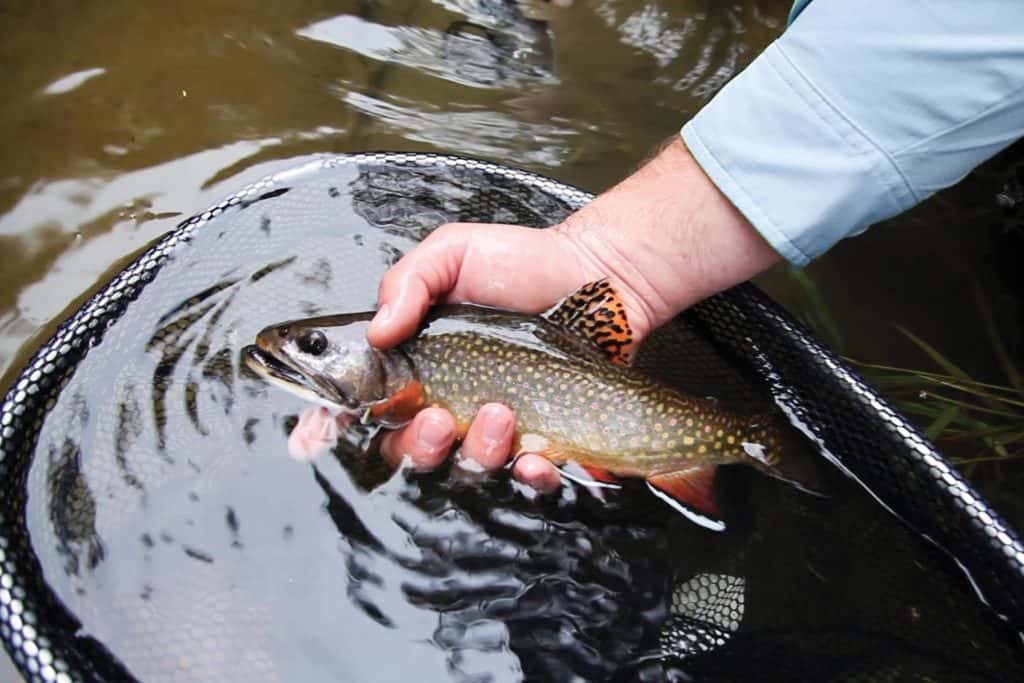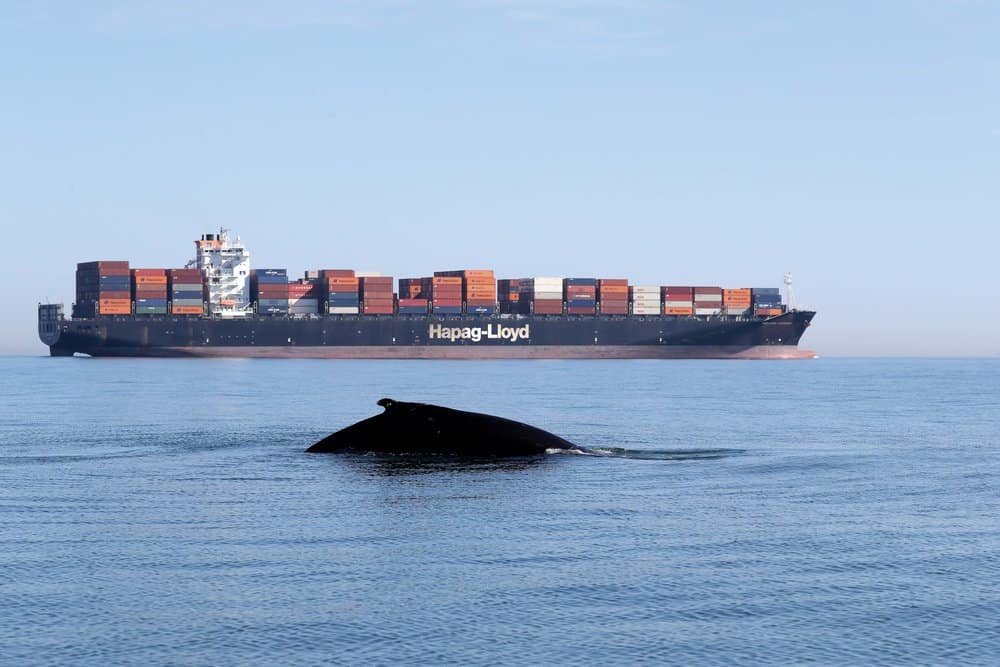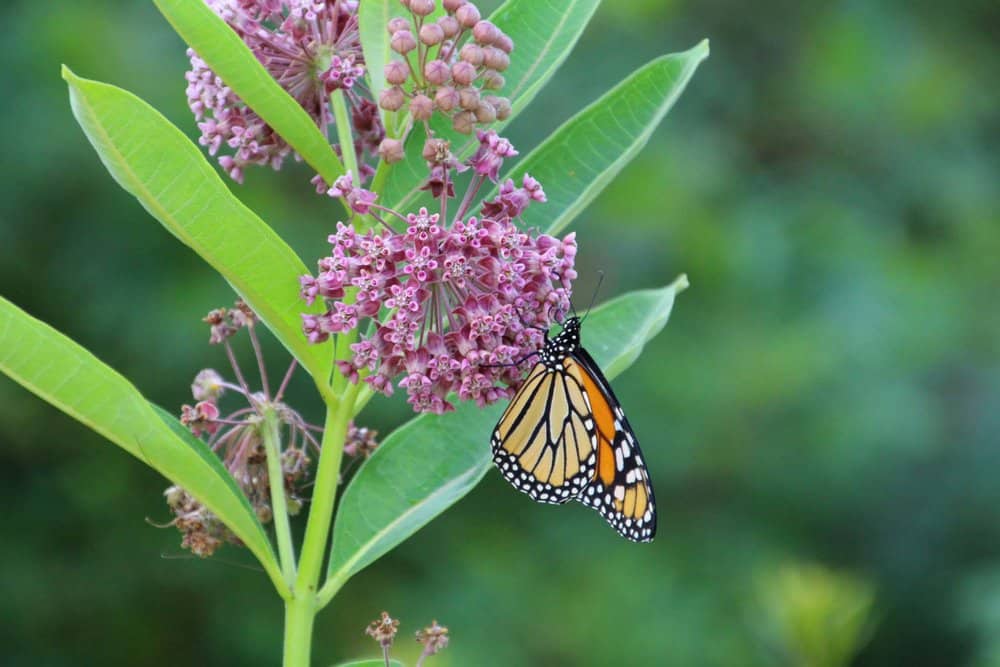The watershed’s native trout are an early indicator of Bay health.
By David Hart
It might be difficult to connect a stream like Beaver Creek to the health of the Chesapeake Bay. This unassuming creek that starts in the Shenandoah Valley is 150 miles from the Bay’s western shore. Besides, it isn’t much wider than an urban bike path. Cross it at 50 miles an hour and you may never even know
it exists.
Jerry Black not only crosses it every day, he grew up near Beaver Creek and owns a home on a knoll overlooking it. For landowners like him, the relatively short and entirely unassuming stream is the Bay.
“This is the starting point. What happens here affects everything downstream all the way to the Bay,” says Black, 68. “I’ve seen a lot of changes in this area and many of them have not been for the better.”
Years before he bought 29 acres bordering this spring-fed creek, it was home to a thriving population of brook trout—the eastern United States’ only native trout. Few species of fish are as sensitive to their environment as brook trout. They are an indicator species, the proverbial canary in the coal mine.
“The older residents who used to fish Beaver Creek told me those trout were 15 or 16 inches, which is unheard of these days. The brook trout we catch in the mountain streams these days are eight or nine inches, tops,” he says.
Countless other waters from central New York south to western Virginia also supported populations of wild brook trout decades ago. Like the fish in Beaver Creek, those native trout are also long gone, victims of apathy, ignorance or greed.
Careless farming, rampant development, and unrestricted logging and mining contributed to the demise
of brook trout in lower elevation streams throughout their range. Creeks that used to run cool and clear, even in the summer, now suffer from excessive nutrients, siltation, and increased temperatures.
Although brook trout are still thriving in places too steep to farm or graze, their range is just a fraction of what it once was. Maryland biologists estimate that just ten percent of the state’s historic brook trout range still supports these fish.
Black, along with thousands of other landowners, scientists and volunteers throughout the Chesapeake Bay watershed, wants to reverse that trend. With the help of groups like Trout Unlimited, the Chesapeake Bay Foundation and the federal government, Black is restoring the section of Beaver Creek that flows through his property.
“I would love to see native trout return to Beaver Creek, but I also understand that what takes place on my land has a positive impact all the way to the Chesapeake Bay,” he says.
He’s right, of course. Although they may live hundreds of miles apart, brook trout are directly connected to speckled trout, striped bass and blue crabs by those thin blue ribbons that start in the mountains and end at the Bay. As trout go, so goes the health of the Bay. It’s not a coincidence that crabs, oysters, aquatic grasses and other organisms in the Chesapeake have followed the same downward spiral as brook trout and other denizens of headwater streams.
“Much of the nitrogen, phosphorous and sediment that enters a small stream in New York or Maryland or Pennsylvania ends up in the Bay,” says Chesapeake Bay Foundation scientist Harry Campbell.
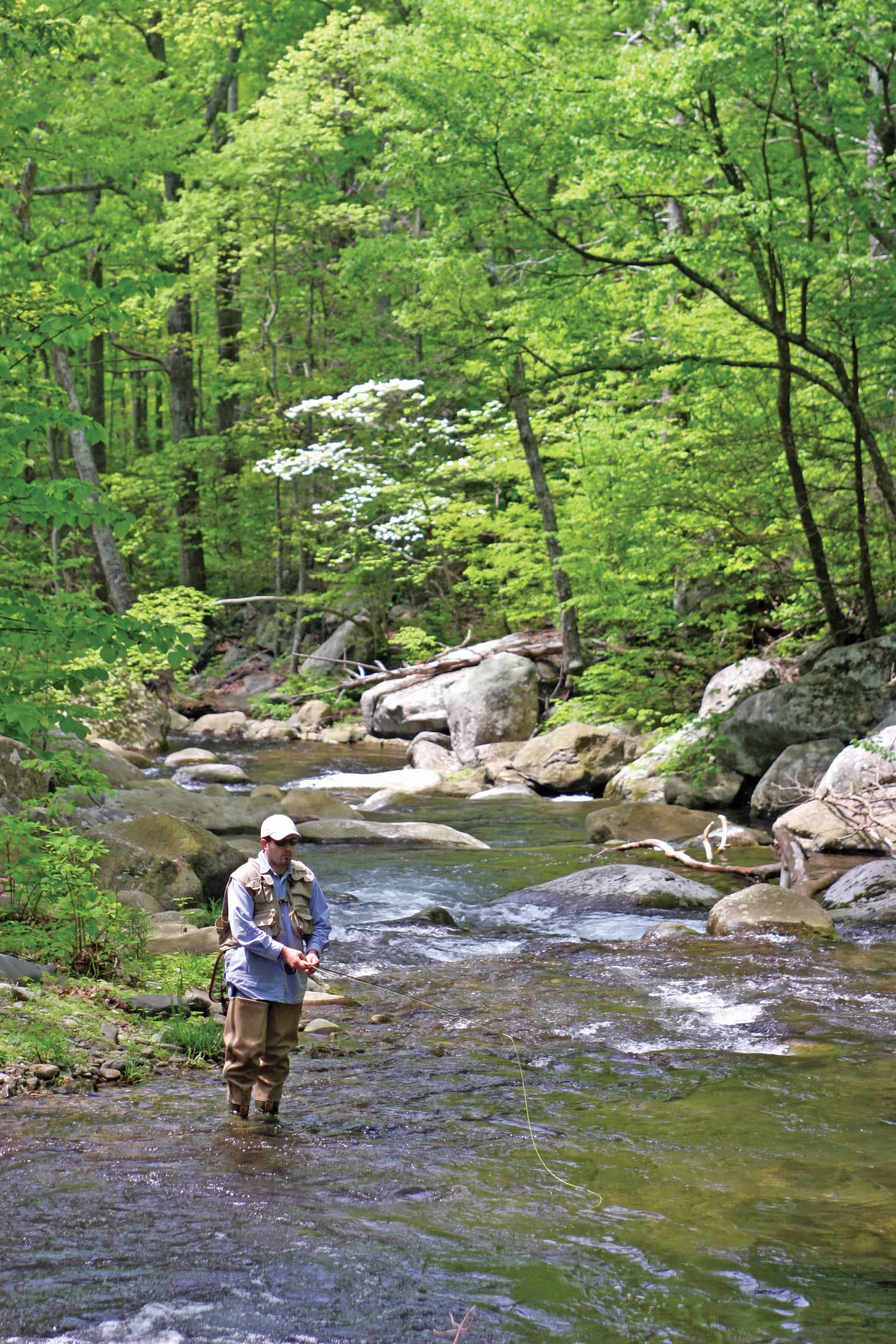
Those nutrients can have a profound impact on the Bay. Nitrogen and phosphorous help fuel algae blooms, which block sunlight from reaching sprigs of young aquatic vegetation. Without adequate light, those plants die. Grass beds not only help filter the water, they serve as nurseries for young fish and crabs. Excessive algae also create “dead zones,” large areas of the Bay with oxygen levels too low to support
aquatic life.
So, where are these nutrients coming from? Stand on the highest vista above Beaver Creek and look in any direction and you will probably see a cluster of grain silos guarding a red or white barn or a long, narrow broiler house. It’s virtually impossible to find a patch of ground in the Shenandoah Valley that isn’t a farm of some sort. Many are poultry or dairy operations, where dozens or even hundreds of Holsteins graze in pastures between twice-daily milkings. Rockingham County, where Beaver and other spring creeks are born, is home to as many as 25,000 dairy cows, according to the US Department of Agriculture. It’s not unusual to see those animals standing knee-deep in a stream, trampling the banks into a muddy mess and sending clouds of sediment downstream with every hard rain. What isn’t pasture is a corn or soybean field, where farmers spread tons of fertilizer, including cow manure, each spring.
The Shenandoah Valley is hardly unique. In 2016 alone, 241 million tons of nitrogen and 13.6 million tons of phosphorous flowed into the Bay from the 64,000-square mile watershed. Some of those nutrients come from water treatment plants and suburban lawns, but most don’t.
“Eighty percent of the nitrogen that enters the Susquehanna River is from non-point source pollution, and the majority of that is from agricultural run-off,” says Campbell, who is the executive director of the CBF’s Pennsylvania office.
It’s not just excess nutrients that have led to significant declines in Bay health over the last several decades. Drive across any major tributary of the Chesapeake after a few days of heavy rain and you’ll see a river of chocolate-brown water rushing downstream. Much of that sediment is coming from plowed fields and denuded stream banks as far away as West Virginia, central New York and southern Virginia.
“Banks that don’t have vegetation on them are prone to severe erosion. Over time, high water events basically straighten the stream channels, which results in even larger amounts of sediment flowing downstream into rivers and ultimately into the Chesapeake Bay,” explains Trout Unlimited fisheries supervisor Seth Coffman, who oversees the conservation group’s headwaters program in Virginia.
Mossy Creek, another Shenandoah Valley spring creek, is a perfect example of that. Just a short cast from Beaver, it also supported a population of large brook trout decades ago. And like Beaver, it suffers from erosion and sedimentation in places.
“As many as 140 tons of sediment were being washed away just from one 2,200-linear foot section of stream every year,” says Coffman.
What doesn’t settle in a tidal river ends up in the Bay, where it smothers aquatic vegetation and suffocates
fish eggs.
That’s gradually changing, thanks to conservation groups and cooperative landowners like Black. Coffman helped oversee restoration projects on Mossy and Beaver creeks that not only reduced erosion, but provided better habitat for aquatic life.
“At Mossy, we came in and basically rebuilt the channel to its original path in a few places, reshaped the eroded banks, placed log baffles to slow down the water and replanted the banks in native grasses, shrubs and pollinator plants. Erosion is down to almost nothing now and what sediment is lifted into the water column during high-water events is deposited in the flood plain adjacent to the channel like it should naturally,” he says.
That’s 140 tons of dirt every year that isn’t being carried into the Bay any more. Multiply that by thousands of restoration projects throughout the Chesapeake’s watershed and it becomes obvious why these conservation efforts are so vital to the health of the Bay.
“The work that is conducted on these headwaters streams has a much more significant and direct impact than if the same work was conducted on the banks of a larger stream or a river below these headwater streams,” says Coffman. “By stopping excess nutrients and sedimentation from entering these streams in the first place, we are preventing them from affecting the entire watershed all the way to the
Bay itself.”
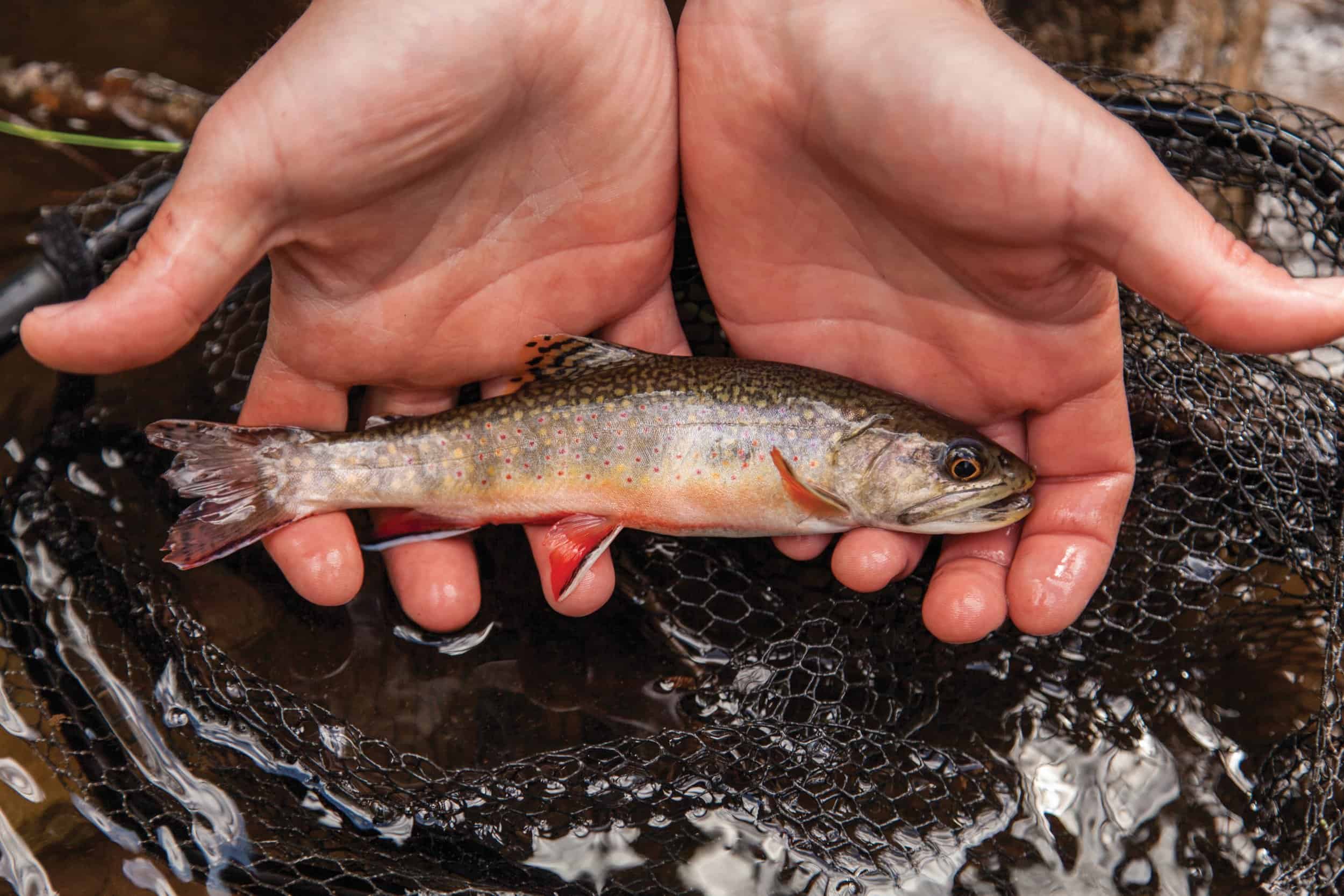
Campbell agrees, adding that, for that reason, much of the CBF’s work is conducted a hundred or more miles from the Bay. Since 1997, the Foundation has partnered with over 5,000 landowners in Pennsylvania to restor or protect more than 2,000 miles of waterways. That may not seem like much, considering the state has 86,000 miles of headwaters streams. Campbell, however, says efforts are targeted at watersheds with the highest conservation needs. Some work is as simple as fencing cattle out of the stream bed and providing alternative water sources. Other projects are far more involved, including rebuilding stream channels, installing natural water flow controls and planting grasses, shrubs and trees.
“The most beneficial thing we can do is create forested buffers where there were none before. By planting native grasses, shrubs and trees, we can reduce large amounts of nutrients from entering the water and we can practically eliminate erosion where it might have been severe prior to restoration efforts,” he says. “Research has shown that streams with a forested buffer remove pollutants at a much greater rate than those without a canopy of trees. The entire ecosystem within a stream is more active and diverse and pollution is taken up at a greater rate in streams with a forested buffer. Stream buffers are also the most cost-effective conservation work we can do.”
Those trees also provide another benefit, one that is critical to brook trout—shade. These fragile fish can’t survive in sustained water temperatures over 72 degrees. Shade keeps lower-elevation streams cooler for longer distances, creating more potential trout habitat.
Providing that shade isn’t cheap. The estimated value of the work done on Black’s section of Beaver Creek alone was about $23,000. That included costs for everything from heavy equipment to native grass seed, as well as the value of in-kind donations by Black and other landowners, plus volunteer labor by TU members. Much of the cash outlay was covered through the US Department of Agriculture’s Natural Resources Conservation Service as well as matching conservation grants. Trout Unlimited also provided technical assistance. That may seem like a lot of money and effort for a few thousand feet of stream, but Campbell insists it is money worth spending.
“We have to keep in mind that everyone benefits from these projects, even people who may never see or catch a brook trout or even a striped bass,” says Campbell. “They help provide clean, safe drinking water, better soil health, cleaner air for everyone, and better wildlife habitat. If you add up the economic benefits
of these various conservation projects aimed at protecting the Bay, it comes to $6.2 billion, so it is money
well-spent.”
It’s not just the Chesapeake that benefits, of course. What was once a two-foot layer of soft, wader-sucking muck on Mossy Creek’s stream bed is now a solid substrate of rock, sand and gravel where the reclamation work took place.
“That is ideal spawning habitat for trout,” says Coffman. “If we can restore more habitat like that section, then there is hope we can see brook trout return to Mossy Creek.”
That’s already happening in Beaver Creek, if only gradually. Native flowers and thick grass line the banks where only bare dirt once lay. Shrubs and trees planted six years ago are starting to lean out over the stream bed, providing abundant shade where there was none before.
Sampling efforts by biologists occasionally find small brook trout in the spring creek now, likely fish migrating downstream from mountain tributaries that still run cold and clear. They aren’t staying in Beaver Creek for long, at least not yet. If those fish are a sign, though, Jerry Black might actually catch a wild 15-inch brook trout from the stream he helped restore.

